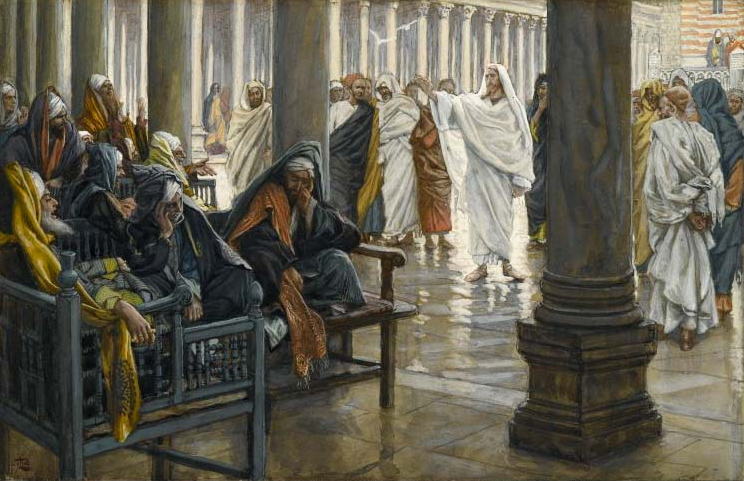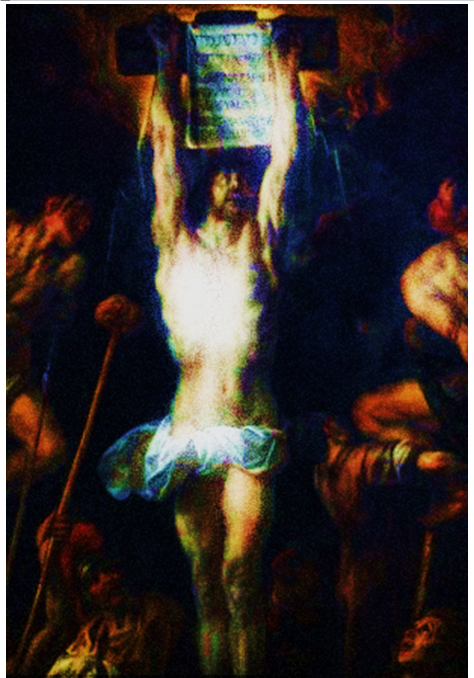AT THE DOOR
by Jeremy Chance Springfield
1/4/17
In the New Covenant texts, Yeshua describes Himself by several titles which are employed at different times to help facilitate an understanding of a particular teaching He is giving. Be it the “Messiah,” “the Son of Man,” “the Light,” or the “Shepherd,” each title provides a context for us to view Him in that provides another layer of depth and appreciation for who He is and what His purpose is in relation to mankind. A particularly interesting title found only twice is when He calls Himself the “Door.”
This title is found in Messiah’s lengthy discourse with the Pharisees, recorded for us in the Aramaic of the Peshitta text of John 10:7-9.
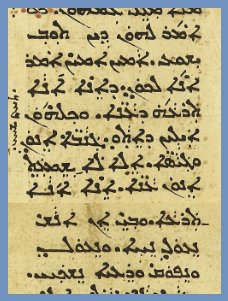
7 Yet, Yeshua said to them furthermore, "Truly, truly, I say to you that I am the Door of the flock,
8 and all those who have come were thieves and bandits, but the flock did not listen to them.
9 I am the Door, and if a man shall enter by Me, he shall live, and go forth, and shall find pasture."
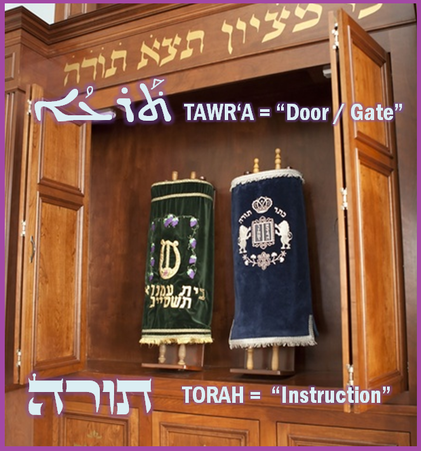
The Hebrew language has two widely-used words for “door,” being DALET and PATAKH. Yeshua chose not to use the familiar Hebrew terms when referring to Himself as the “Door.” Rather, as He was speaking Aramaic to the crowds, He kept within the language of His countrymen, and instead went with the proper Aramaic term for “door / gate” – TAWR‘A. I have translated the Aramaic text above into English by rendering the word TAWR‘A as "door."
An interesting detail in His use of this is that the word is very similar phonetically to the Hebrew word for “Instruction,” being TORAH. He essentially provided the Pharisees, who would have been intimately familiar with the Hebrew language, a trans-lingual phonetic word-play, connecting Himself with the Torah by calling Himself the “Door” in Aramaic, a wordplay speaking to His authority in teaching and performing the Word.
An interesting detail in His use of this is that the word is very similar phonetically to the Hebrew word for “Instruction,” being TORAH. He essentially provided the Pharisees, who would have been intimately familiar with the Hebrew language, a trans-lingual phonetic word-play, connecting Himself with the Torah by calling Himself the “Door” in Aramaic, a wordplay speaking to His authority in teaching and performing the Word.
The fact that He employed a word-play to the Torah by describing Himself as the Door of the flock is significant because a door is only a door by possessing the framework which creates an “entrance” in the first place. The framework for a door consists of doorposts and a lintel. Interestingly, the Torah itself mentions important aspects centered on the framework of a door in three different passages that speak to our subject at hand in an amazing manner.
The doorpost is first brought up in Scripture in Exodus 12, when the commandments concerning the original Passover are presented. In Exodus 12:7, and 22-23, we are told that the blood of the lamb is to be smeared upon each mezuzah / doorpost of the homes of the Israelites in Egypt.
The doorpost is first brought up in Scripture in Exodus 12, when the commandments concerning the original Passover are presented. In Exodus 12:7, and 22-23, we are told that the blood of the lamb is to be smeared upon each mezuzah / doorpost of the homes of the Israelites in Egypt.

And they shall take from the blood, and they shall place it upon the two doorposts, and upon the lintel upon the homes in which they shall eat it.
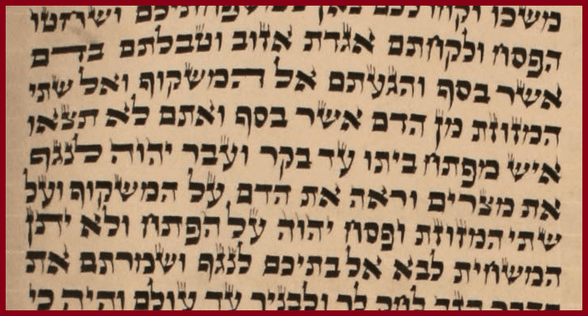
And again in:
22 And you shall take a bundle of hyssop, and immerse it in the blood which is in the bowl, and strike at the lintel and at the two doorposts from the blood which is in the bowl, and no man of you shall go forth from the door of his home until morning.
23 And YHWH shall cross over to strike Mitzrayim; and He shall see the blood upon the lintel, and upon the two doorposts, and YHWH shall pass above the door, and will not give the destroyer entrance to your homes to strike you.
22 And you shall take a bundle of hyssop, and immerse it in the blood which is in the bowl, and strike at the lintel and at the two doorposts from the blood which is in the bowl, and no man of you shall go forth from the door of his home until morning.
23 And YHWH shall cross over to strike Mitzrayim; and He shall see the blood upon the lintel, and upon the two doorposts, and YHWH shall pass above the door, and will not give the destroyer entrance to your homes to strike you.
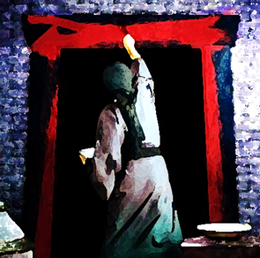
The blood upon the doorpost was a sign for us that the Holy One would pass over the home and not take the life of the firstborn son inside. The way in which the blood was to be placed upon the doorpost itself constituted a sign that is of significance to us: Judaism tells us that it was in the shape of the Hebrew letter Tav, which, at that time in history, was essentially the shape of a cross.
The doorpost, therefore, is first mentioned in Scripture with the act of making a bloody “cross” shape upon it. For a more complete explanation on how that worked, please see my study THE SIGN OF BLOOD.
The doorpost, therefore, is first mentioned in Scripture with the act of making a bloody “cross” shape upon it. For a more complete explanation on how that worked, please see my study THE SIGN OF BLOOD.
This commandment to place the blood of a lamb upon the doorpost, and the link Yeshua made of Himself as the Door / Gate for sheep should not be overlooked. The missionary Paul spoke of the shepherding aspect of Messiah and the blood and cross imagery in a relevant manner in his letter to the congregation at Colossae, in Colossians 1:20.
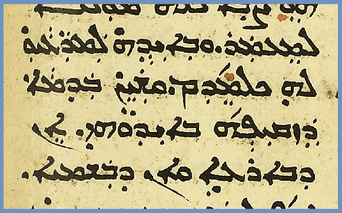
…and by His hand to shepherd for Himself everything, and by His hands make peace with the blood of the cross, if in the earth, or if in the heavens.
The blood of the lamb at the doorpost in the shape of a cross at the first Passover is a powerful image of what the blood of Messiah did upon the wood of the cross so many generations later at another Passover. The freedom we possess knowing Him as the Door opens a whole new world of liberty from the shackles of sin’s slavery, to a freedom found within the boundaries of being a servant to the Holy One Himself, whose laws are not burdensome, but preserve and give worth to our lives.
The second time the Torah addresses the doorpost is in Exodus 21:2-6, where the text discusses the details surrounding a Hebrew who sells himself into slavery to another Hebrew in order to resolve a debt he could not otherwise pay. He had to go free after serving six whole years, but if he should choose instead to remain of his own will as a slave forever to his master because he saw how good and giving his master was to him, then something of great interest had to happen to bind them together. 21:6 lays it out for us.

And his master shall bring him near to the Deity, and bring him near to the door, or to the doorpost, and pierce his ear with an awl, and he shall serve forever.

The imagery recorded here is brutal, but beautiful. The slave who decided to remain indentured forever would endure a painful piercing of his ear at the door or doorpost, and that pierced ear would be a sign for the rest of his life to himself and all who see him that he was a servant because he wanted to be one. This is the basic definition of a bondservant – a servant bound to his master out of love and respect for him. It is a perfect link in the chain from the original appearance of the blood on the doorposts that set slaves free to worship without their bonds of sin, to a slave desiring to bind himself to a master who is righteous and seeks his own good.
This commandment is referred to in the New Covenant in relation to Yeshua as our Master, and us as His servants. Again, in the letter of the missionary Paul to the congregation in Galatia, we find his popularly-quoted statement in Galatians 2:20 that glows with meaning anew once placed into proper Torah context along with the topic of the doorpost and Yeshua’s comment about being the Door.
This commandment is referred to in the New Covenant in relation to Yeshua as our Master, and us as His servants. Again, in the letter of the missionary Paul to the congregation in Galatia, we find his popularly-quoted statement in Galatians 2:20 that glows with meaning anew once placed into proper Torah context along with the topic of the doorpost and Yeshua’s comment about being the Door.
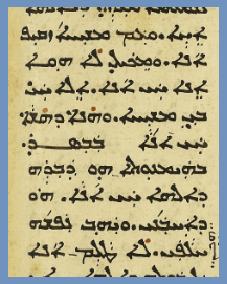
And with the Messiah I have been crucified, and henceforth, I do not live, but instead, the Messiah lives in me, and this that I now live in the flesh, I live by the trust of the Son of the Deity, who loved me and gave His Soul on my behalf.
What is seen, then, in the Torah’s commandment for a slave who desires to remain forever in such a state to have his ear pierced at the door or doorpost, is the link to being crucified with the Messiah, and to live a new life with an identity forever linked to Him.
The third time that the doorpost is mentioned in the Torah is in the text from Deuteronomy 6:9, and then again repeated in Deuteronomy 11:20, which close out its appearances in the Torah. It is part of what is known widely as the Shema, which includes the most important commandment of all Scripture – to love the Most High with all our heart, soul, and very-ness. The passage tells us in 6:6 that the words He commands us are to be upon our heart, and goes on to list further instructions we are to do concerning them, where it finally says in 6:9 the commandment of the present topic:

And you shall write them upon the doorposts of your homes, and on your gates.
The commandment is repeated again for us in Deuteronomy 11:20, where the directive is identical to the previous, located in the “second Shema.”

And you shall write them upon the doorposts of your homes, and on your gates.
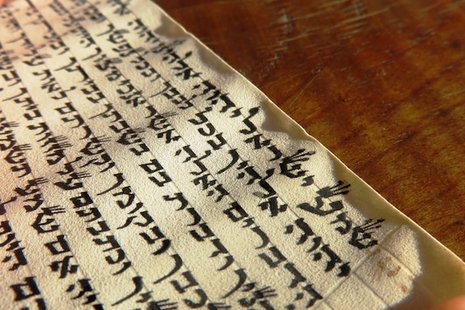
This commandment merits some further explanation. The Hebrew people, over time, being led by the Spirit of the Holy One, came to perform this commandment for the most part by placing a scroll containing His Word in a small vessel and hanging it upon the doorposts of their dwellings. The container itself eventually became known as a mezuzah, when in actuality, it is being placed upon the MEZUZAH (literally: “doorpost”) of the home. Since the Hebrew commandment tells us that His Words are to be written AL “upon / above” the doorposts, then there is leeway given in the Torah as to precisely how one might do it – thus the overwhelming majority of Hebrew believers place His Word in the container and attach it “upon” the doorposts.
This method of performing the commandment of writing His Words upon the doorposts and gates of our dwelling serves a unique purpose. It is a connective commandment; linking our lives in our homes to Him and His world. Mankind segregates himself from the creation and the Creator by segmenting himself into a fabricated shelter, making a dwelling wherein he lives apart from the rest of the world. The act of placing His eternal Words upon the entrances to our homes attaches us to what is beyond us. The string of inspired Words written on the scroll that is placed upon the doorpost and gate acts as a tether tying man and His Maker – the abode of man with such obedient decrees hung for all to see serves as a sign to others that our homes are His. It is a portrayal of the partnership that exists between one’s life and the Almighty. The act of placing a mezuzah upon a doorpost is thus a beautiful Biblical affirmation of our allegiance and union to the One who owns all things.
This method of performing the commandment of writing His Words upon the doorposts and gates of our dwelling serves a unique purpose. It is a connective commandment; linking our lives in our homes to Him and His world. Mankind segregates himself from the creation and the Creator by segmenting himself into a fabricated shelter, making a dwelling wherein he lives apart from the rest of the world. The act of placing His eternal Words upon the entrances to our homes attaches us to what is beyond us. The string of inspired Words written on the scroll that is placed upon the doorpost and gate acts as a tether tying man and His Maker – the abode of man with such obedient decrees hung for all to see serves as a sign to others that our homes are His. It is a portrayal of the partnership that exists between one’s life and the Almighty. The act of placing a mezuzah upon a doorpost is thus a beautiful Biblical affirmation of our allegiance and union to the One who owns all things.
There is a further intent behind it, however. His commandments are always physical and spiritual – possessing of two sides that complement each other and give a grand portrait of His true will in a matter. To help appreciate the deeper purpose of the commandment and how it links us to His will, we need to look also at the actual vessel for the mezuzah that developed over time as the prevalent method of keeping the commandment. Let us look at the main aspects of the mezuzah and we shall see that they follow the pattern established in Scripture about the deeper concepts of what happens at the doorpost:
|
The container is very often made of wood / Messiah was crucified on wood (see Acts 10:39) It is hung on the doorpost by nails at top and bottom / Messiah was nailed to the cross by his hands and his feet (see John 20:25) The scroll upon which the Word is written is made from skin of a kosher animal / Messiah is the Word made flesh (see John 1:14) |
The complete set of details given show us that Messiah referred to Himself as the Door with a term that phonetically linked Him to the Torah for a good reason. The Torah’s discussions of what happens at the door and doorpost are all connected to the sacrifice of the Messiah in every way. As Messiah went on to hang upon the cross on that dark Passover, one has to wonder if anybody present connected the dots from what they heard Him say about being the Door to what they had read in the Torah and learned in their houses of study. Could they perceive that the Holy One had been preparing the hearts of His people to receive the Passover Lamb who would give His blood, the Servant who would be pierced with nails, the Word who was made flesh? More importantly, can we who perceive the message at this moment make the right choice concerning what happens at the Door?
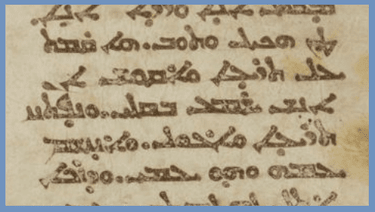
Lo! I stand at the door and shall knock. If a man hears My voice, and shall open the door, then I shall enter, and I shall dine with him, and he with Me.
All study contents Copyright Jeremy Chance Springfield, except for graphics and images, which are Copyright their respective creators.
